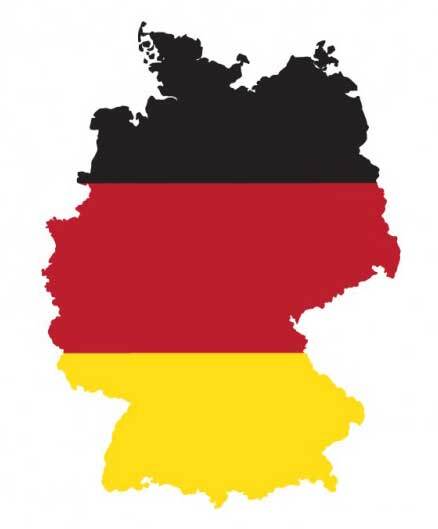- development of antiviral peptides,
- modification of antibody flexible chane
to virus (see previus research)
- stepwise testing of each antibody to antigen,
- determination of key amino acid residue
- modification of antibody flexible chane
to virus (see previus research)
- stepwise testing of each antibody to antigen,
- determination of key amino acid residue

Our method include:
- range of affinity changes,
- determining the effectiveness of drugs due to mutations in virus (see previus research)
- definition of resistance,
- range of affinity changes,
- determining the effectiveness of drugs due to mutations in virus (see previus research)
- definition of resistance,
AI
Development of virus inhibitors taking into account the mutational variability of viruses
Part 1
The results of the completed project will allow identifying the inhibitors of Sars Cov 2
The results of the completed project will allow identifying the inhibitors of Sars Cov 2
Virus Sars Cov 2 is the cause of Covid-19
How done vaccine to defeat coronavirus Sars- Cov-2? Antivirus methodology to defeat the virus Covid-19. What is Sars-cov-2?
VIRUS SARS COV 2 IS THE CAUSE OF COVID-19
Vaccine development against SARS-CoV-2 virus S-glycoprotein protein in three areas: HR1, HR2, and RBD based on highly efficient polypeptide sequences.
In addition, inhibitors of Sars-Cov-2 will be developed on the basis of the existing wide experimental base for inhibition of viruses such as HIV-1, Ebola virus, paramyxovirus (SV5), respiratory syncytial virus (RSV).
In addition, inhibitors of Sars-Cov-2 will be developed on the basis of the existing wide experimental base for inhibition of viruses such as HIV-1, Ebola virus, paramyxovirus (SV5), respiratory syncytial virus (RSV).
One of the modern directions in the development of a vaccine against coronavirus (Covid-19) is the use of peptides that will bind to the virus Sars-Cov-2 in the active center of virus protein and block its tetramerization and binding to the receptor on the surface of an animal cell. The problem is finding the right peptide.In 2019, our group developed a methodology for selecting peptides by the method of gradually improving binding and increasing affinity with target proteins in the active center.
Relevance of the coronavirus vaccine development project.
SARS-CoV-2 outbreak of coronavirus disease (COVID-19) (Severe acute respiratory syndrome coronavirus 2) was registered in December 2019 in the city of Wuhan, China. It poses a serious threat to global public health. In the presented project, it is planned to develop specific anti-coronavirus therapy and prevention of viral disease, which determines relevance of the coronavirus vaccine development project.
What is Sars-Cov-2?
Figure 1 shows the structure of the virion. The RNA sense genome and the viral nucleocapsid phosphoprotein form a helical nucleocapsid. A corona with large distinctive spikes in the envelope makes it possible to identify coronaviruses using electron microscopy. Spikes, oligomers of S-glycoprotein protein, bind to receptors on the host cells and connect the viral envelope to the membranes of the host cells.

Fig. 1 Structure of the coronavirus virion [SARS-Associated Coronavirus]
In the case of SARS-CoV, the S-glycoprotein protein (Spike glycoprotein) on the virion surface provides receptor recognition and fusion of the viral and host cell membranes [Structural basis for the recognition of SARS-CoV-2 by full-length human ACE2]. Infection begins when the S-glycoprotein viral protein attaches to its complementary receptor on the host cell. After the protease is attached, the host cell cleaves and activates the glycoprotein protein attached to the receptor. Depending on the available protease of the host cell, cleavage and activation allow the virus to enter the host cell by endocytosis or direct fusion of the viral envelope with the host membrane. Upon penetration into the host cell, the viral particle is not coated, and its genome enters the cell cytoplasm. Note that SARS-CoV protein is a type I transmembrane glycoprotein that plays an important role in mediated viral infection and is common to all HCoV (Human coronavirus 229E).
Let us consider in more detail the key factor determining the specificity of the host cell. The trimeric S-glycoprotein (Spike glycoprotein) localized in the envelope can be further cleaved by host cell proteases at the N-terminus, forming the S1 subunit and the membrane-bound C-terminal region, S2 subunit. Moreover, S1 contains a receptor binding domain (RBD), which directly binds to the peptidase domain (PD) of angiotensin-converting enzyme 2 (ACE2 Angiotensin-converting enzyme 2), while S2 is responsible for membrane fusion. When S1 binds to the ACE2 host receptor, another S2 cleavage site is opened and cleaved by the protease host, a process that is critical for viral infection [Structural basis for the recognition of SARS-CoV-2 by full-length human ACE2]. S- glycoprotein remains non-covalent bound in a metastable conformation before fusion. After endocytosis of the virus by the host cell, a second cleavage is formed, which is mediated by endolysosomal, which allows membrane fusion activation to occur. Subunit S2 contains heptadic repeat (HR) regions: HR1 and HR2. The S1 subunit binds the cell receptor through its receptor binding domain, followed by conformational changes in the S2 subunit. Protein SARS-Cov is crucial in the process of penetration of the virus into the host cell and is a promising target for the prevention and treatment of infectious diseases caused by coronovirus. The protein is folded into a spiral structure (see Fig. 2), which can be assembled into a trimeric bundle with six helices (trimer of HR1 / HR2 heterodimers).

Fig. 2: Three-dimensional structure of S-glycoprotein protein indicating domains to be inhibited by RBD, HR1
Successful peptide inhibitors of virus penetration into the host cell have been successfully developed in the case of HIV-1, Ebola virus, paramyxoviruses (SV5), respiratory syncytial virus (RSV). So, the Ebola virus was 99% inhibited when using the HIV peptide C-peptide conjugate as an inhibitor. The sequence found is characterized by the highest activity against the Ebola virus [Inhibition of Ebola Virus Entry by a C-peptide Targeted to Endosomes]: Tat-Ebo3S, sequence
YGRKKRRQRRRGSGIEPHDWTKNSTDKSDQSIHDFVDK
Inhibitor molecules included D peptides, synthetic peptides from the N and C ends of a protein virus molecule that could bind the HR1 viral domain and effectively inhibit viral infection.
YGRKKRRQRRRGSGIEPHDWTKNSTDKSDQSIHDFVDK
Inhibitor molecules included D peptides, synthetic peptides from the N and C ends of a protein virus molecule that could bind the HR1 viral domain and effectively inhibit viral infection.
Problem Solving Approaches It is reasonable to assume that HR1 may also be a good target for the development of fusion inhibitors of highly pathogenic HCoV viruses. The second domain to be inhibited is the RBD domain, which binds to the enzyme ACE2 (Angiotensin-converting enzyme 2). In this case, ACE2 binds to the receptor binding motif (RBM) in the receptor binding domain (RBD) of SARS-CoV and functions as a receptor for SARS-CoV. Recently, it has been discovered that human ACE2 facilitates the penetration of SARS-CoV-2 into cells [Crystal Structure of the Receptor-Binding Domain from Newly Emerged Middle East Respiratory Syndrome Coronavirus]. The RBD domain of SARS-CoV-2 interacts with human ACE2. Thus, ACE2 is defined as a receptor for SARS-CoV-2 and a suitable target for inhibiting the virus in the cell. Thus, to solve this problem, it is necessary to develop inhibitors of the HR1 and HR2 regions, blocking the merger of two subunits S1 and S2. The fusion region of HR1 and HR2 is a convenient target for inhibiting viral fusion. The second domain is the RBD site, which is responsible for binding to the ACE2 enzyme, which is a cellular receptor.
Project Stages Analysis and selection of glycoprotein protein structures taking into account mutations in various conformations of subunits S1 and S2. One of the directions of the proposed project is to identify common features and differences between different types of SARS-Cov viral protein, which is prone to acquire mutations. Moreover, differences can be observed both within different types of protein, as well as between representatives of the same type of proteins due to various experimental methods used to calculate the three-dimensional structure of the protein.
The study of previous developed inhibitors, as well as therapeutic approaches based on small molecules. In this case, successful and unsuccessful trends and approaches in protein inhibition, mobile and conservative interaction sites, flexible sites and sites prone to mutations and conformational
restructuring. Available data will be divided into groups:
Small chemical molecule inhibitors (1 week)
Inhibitors in the form of D-peptides, L-peptides, alpha-helices, amino acid
sequences with famous structure (3 weeks)
unknown structure. In this case, we will reconstruct the three-dimensional structure of previously found inhibitors, the antiviral activity of which was detected during the experiments, but did not reach clinically significant levels. (6 weeks)
Transition to a detailed study of HR1, HR2, and RBD plots in proteins of various types with and without mutations (wild type).
Development of mathematical methods and algorithms for modeling alanine scanning of selected areas and calculation of potential energies between pairwise taken amino acid residues of each protein. And also based on the developed mathematical methods, we will analyze the change in affinity, calculate the range of variation of the dissociation constant for point substitutions amino acid residues with alanine in proteins, which will significantly save on biological material, payment and use of research equipment. In molecular biology, alanine scanning is a method used to determine the contribution of a particular residue to the stability or function of a given protein. Alanine scanning mutagenesis of protein-protein interfacial residues can be applied to a wide range of protein complexes to understand structural and energy characteristics of hot spots.
The results of the work performed at this stage will produce the following results:
Determination of the stability of protein complexes with mutations of amino acid residues, taking into account the three-dimensional structure of the biocomplex
The range of changes in the affinity of the dimeric complex before and after the mutations will be obtained with each replacement.
The values of the potential energy of the potential energy of interaction between all amino acid residues of one protein and amino acid residues of another protein for each mutation.
A measure of the differential entropy change for each mutation.
Theoretical calculation of the range of variation of Kd values.
Three-dimensional maps of potential energy of electrostatic interaction
two wild-type proteins and a mutant protein. Moreover, maps of the potential energy of the electrostatic interaction of amino acid residues of the involved proteins, which will visualize the nature of the formation of the protein complex
Selection of inhibitors for selected areas, taking into account the three-dimensional structure of proteins, using the programs developed in the project. Analysis of the resulting structures, the selection of structures characterized by a minimum of potential energy, a minimum measure changes in differential entropy, the minimum value of lg (cond (w)). Using off-the-shelf molecular docking programs, computing clusters and servers to select the best inhibitors.
EXPERIMENTAL PART Experimental verification of the molecules found. Synthesis of inhibitors, acquisition of an S-glycoprotein molecule, verification of in vitro affinity of the found inhibitors to S-glycoprotein. Determination of Kd (dissociation constant) and IC50 (concentration of half-maximal inhibition, — an indicator of the effectiveness of the ligand with inhibitory biochemical or biological interaction. Note that IC₅₀ is a quantitative indicator that shows how much is needed. ligand inhibitor to inhibit the biological process by 50). An in vivo experiment on cell lines. Preparatory phase (synthesis of inhibitors, supply of molecules, ordering and supply of protein S-glycoprotein, checking the purity and suitability of the drug) 1.5 months The main stage of the experiment In vitro and in vivo (on cell lines).
Processing received data
Expected results.
The results of the completed project will allow identifying area inhibitors HR1 and HR2 of the viral S-glycoprotein protein of the SARS-CoV-2 virus, which by their biological functions will lead to blocking the fusion of the two viral subunits S1 and S2. In this case, a second group of inhibitors will be developed, the effect of which will be directed to the inhibition of the second domain, which is the site of the RBD (receptor-binding domain) of the S-glycoprotein protein, which binds to ACE2 cell enzyme (Angiotensin-converting enzyme 2), which is the receptor of the host cell. The results of this project will allow the development of a therapeutic vaccine against Covid-19 based on the inhibitors found.
Project Stages Analysis and selection of glycoprotein protein structures taking into account mutations in various conformations of subunits S1 and S2. One of the directions of the proposed project is to identify common features and differences between different types of SARS-Cov viral protein, which is prone to acquire mutations. Moreover, differences can be observed both within different types of protein, as well as between representatives of the same type of proteins due to various experimental methods used to calculate the three-dimensional structure of the protein.
The study of previous developed inhibitors, as well as therapeutic approaches based on small molecules. In this case, successful and unsuccessful trends and approaches in protein inhibition, mobile and conservative interaction sites, flexible sites and sites prone to mutations and conformational
restructuring. Available data will be divided into groups:
Small chemical molecule inhibitors (1 week)
Inhibitors in the form of D-peptides, L-peptides, alpha-helices, amino acid
sequences with famous structure (3 weeks)
unknown structure. In this case, we will reconstruct the three-dimensional structure of previously found inhibitors, the antiviral activity of which was detected during the experiments, but did not reach clinically significant levels. (6 weeks)
Transition to a detailed study of HR1, HR2, and RBD plots in proteins of various types with and without mutations (wild type).
Development of mathematical methods and algorithms for modeling alanine scanning of selected areas and calculation of potential energies between pairwise taken amino acid residues of each protein. And also based on the developed mathematical methods, we will analyze the change in affinity, calculate the range of variation of the dissociation constant for point substitutions amino acid residues with alanine in proteins, which will significantly save on biological material, payment and use of research equipment. In molecular biology, alanine scanning is a method used to determine the contribution of a particular residue to the stability or function of a given protein. Alanine scanning mutagenesis of protein-protein interfacial residues can be applied to a wide range of protein complexes to understand structural and energy characteristics of hot spots.
The results of the work performed at this stage will produce the following results:
- Determination of the stability of protein complexes with point substitutions of amino acid residues, taking into account the three-dimensional structure of the biocomplex, based on the developed project criteria for the stability of the biological complex.
- The range of changes in the affinity of the dimeric complex will be obtained with each replacement. The biophysical approach developed in the project allows qualitatively determining key amino acid residues in the interaction of two polypeptide chains, as well as assess the range of Kd changes when replacing key amino acid residues
in peptides when they are bound to the target protein. Thus, it is possible to predict the stability of protein complexes, as well as qualitatively determine the range of variation of the dissociation constant, synthesize peptides with a given dissociation constant for various proteins, while at the same time allowing to increase
the selectivity of peptides, increasing the affinity for one protein and decreasing for others, which is an important condition for improving peptide therapy. - Determining the measure of change in differential entropy for each replacement of the amino acid residue as a result of a model alanine scan.
- Development of three-dimensional maps of the potential energy of the electrostatic interaction of two wild-type proteins. Moreover, the obtained maps of the potential energy of the electrostatic interaction of the amino acid residues of the involved proteins will allow us to visualize the nature of the formation of the protein complex, identify the maxima and minima of the potential energy between the amino acid residues of the two proteins, and identify the key amino acid residues that take into account the maximum values of the potential
energy. Particular attention will be paid to nature interacting amino acid residues (hydrophobic, hydrophilic, charged). The analysis of interacting proteins was carried out taking into account the three-dimensional structure, where the areas with the greatest potential energy of electrostatic interaction will be revealed.
Determination of the stability of protein complexes with mutations of amino acid residues, taking into account the three-dimensional structure of the biocomplex
The range of changes in the affinity of the dimeric complex before and after the mutations will be obtained with each replacement.
The values of the potential energy of the potential energy of interaction between all amino acid residues of one protein and amino acid residues of another protein for each mutation.
A measure of the differential entropy change for each mutation.
Theoretical calculation of the range of variation of Kd values.
Three-dimensional maps of potential energy of electrostatic interaction
two wild-type proteins and a mutant protein. Moreover, maps of the potential energy of the electrostatic interaction of amino acid residues of the involved proteins, which will visualize the nature of the formation of the protein complex
Selection of inhibitors for selected areas, taking into account the three-dimensional structure of proteins, using the programs developed in the project. Analysis of the resulting structures, the selection of structures characterized by a minimum of potential energy, a minimum measure changes in differential entropy, the minimum value of lg (cond (w)). Using off-the-shelf molecular docking programs, computing clusters and servers to select the best inhibitors.
EXPERIMENTAL PART Experimental verification of the molecules found. Synthesis of inhibitors, acquisition of an S-glycoprotein molecule, verification of in vitro affinity of the found inhibitors to S-glycoprotein. Determination of Kd (dissociation constant) and IC50 (concentration of half-maximal inhibition, — an indicator of the effectiveness of the ligand with inhibitory biochemical or biological interaction. Note that IC₅₀ is a quantitative indicator that shows how much is needed. ligand inhibitor to inhibit the biological process by 50). An in vivo experiment on cell lines. Preparatory phase (synthesis of inhibitors, supply of molecules, ordering and supply of protein S-glycoprotein, checking the purity and suitability of the drug) 1.5 months The main stage of the experiment In vitro and in vivo (on cell lines).
Processing received data
Expected results.
The results of the completed project will allow identifying area inhibitors HR1 and HR2 of the viral S-glycoprotein protein of the SARS-CoV-2 virus, which by their biological functions will lead to blocking the fusion of the two viral subunits S1 and S2. In this case, a second group of inhibitors will be developed, the effect of which will be directed to the inhibition of the second domain, which is the site of the RBD (receptor-binding domain) of the S-glycoprotein protein, which binds to ACE2 cell enzyme (Angiotensin-converting enzyme 2), which is the receptor of the host cell. The results of this project will allow the development of a therapeutic vaccine against Covid-19 based on the inhibitors found.
Advantages of ordering with us
-
 Cost savingsOrdering work with us, you save almost 90% on preliminary screening experiments to find the most suitable immunoglobulins
Cost savingsOrdering work with us, you save almost 90% on preliminary screening experiments to find the most suitable immunoglobulins -
 VisibilityThree-dimensional map of the energy interaction of the amino acid sequences of an antibody with an antigen
VisibilityThree-dimensional map of the energy interaction of the amino acid sequences of an antibody with an antigen -
 No experiment neededDetermination of the affinity range for various substitutions of amino acid residues, during the formation of an antibody-antigen complex before an in vitro experiment
No experiment neededDetermination of the affinity range for various substitutions of amino acid residues, during the formation of an antibody-antigen complex before an in vitro experiment -
 Wide coverageYou do not have to be limited to a narrow list of substitutions of amino acid residues; instead, you get a wide range of possible modifications
Wide coverageYou do not have to be limited to a narrow list of substitutions of amino acid residues; instead, you get a wide range of possible modifications -
 Affinity range antibodies-antigenThe results obtained will determine the key amino acid residues that make the greatest changes in the affinity of the dimeric complex.
Affinity range antibodies-antigenThe results obtained will determine the key amino acid residues that make the greatest changes in the affinity of the dimeric complex. - EfficiencyWe take care about our clients time. Just contact us — and we will help you with all the questions.


